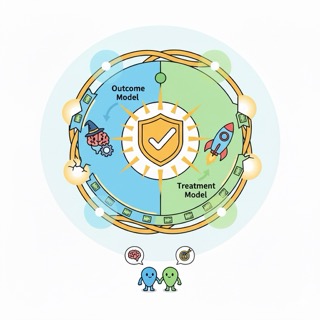
Bias, Variance, and Doubly Robust Estimation: Testing The Promise of TMLE in Simulated Data
Finally understood TMLE’s “doubly robust” property through simulation. Works well when either outcome OR treatment model is correct. XGBoost + TMLE captured complex relationships without manual specification. But beware the confidence intervals - Frank Harrell was right to say “prepare to be disappointed!” 🤔



